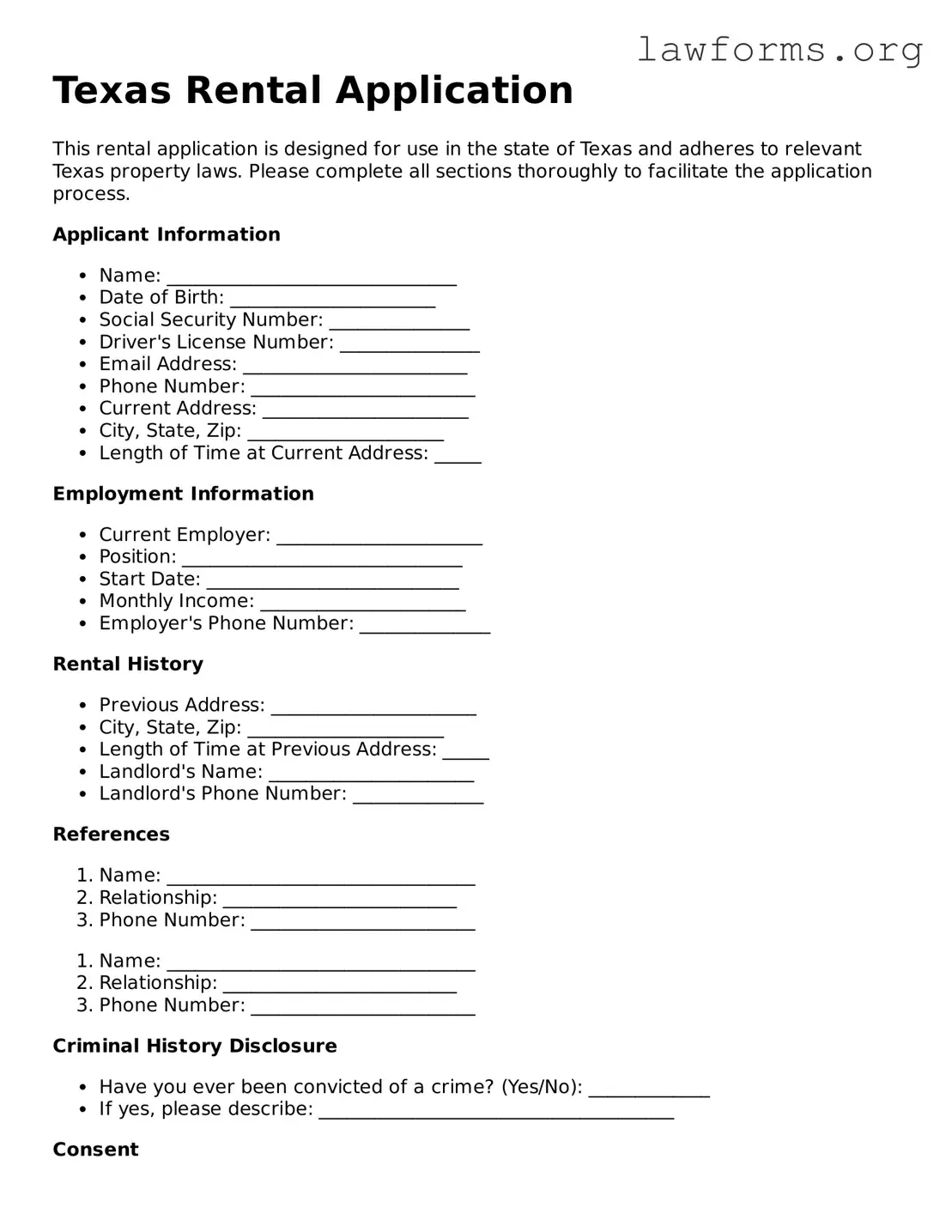Texas Rental Application
This rental application is designed for use in the state of Texas and adheres to relevant Texas property laws. Please complete all sections thoroughly to facilitate the application process.
Applicant Information
- Name: _______________________________
- Date of Birth: ______________________
- Social Security Number: _______________
- Driver's License Number: _______________
- Email Address: ________________________
- Phone Number: ________________________
- Current Address: ______________________
- City, State, Zip: _____________________
- Length of Time at Current Address: _____
Employment Information
- Current Employer: ______________________
- Position: ______________________________
- Start Date: ___________________________
- Monthly Income: ______________________
- Employer's Phone Number: ______________
Rental History
- Previous Address: ______________________
- City, State, Zip: _____________________
- Length of Time at Previous Address: _____
- Landlord's Name: ______________________
- Landlord's Phone Number: ______________
References
- Name: _________________________________
- Relationship: _________________________
- Phone Number: ________________________
- Name: _________________________________
- Relationship: _________________________
- Phone Number: ________________________
Criminal History Disclosure
- Have you ever been convicted of a crime? (Yes/No): _____________
- If yes, please describe: ______________________________________
Consent
By signing below, I authorize the landlord or property manager to conduct a background and credit check as part of the rental application process.
Signature: ___________________________ Date: ____________________
Thank you for your interest in renting property in Texas. Your application will be reviewed promptly.
